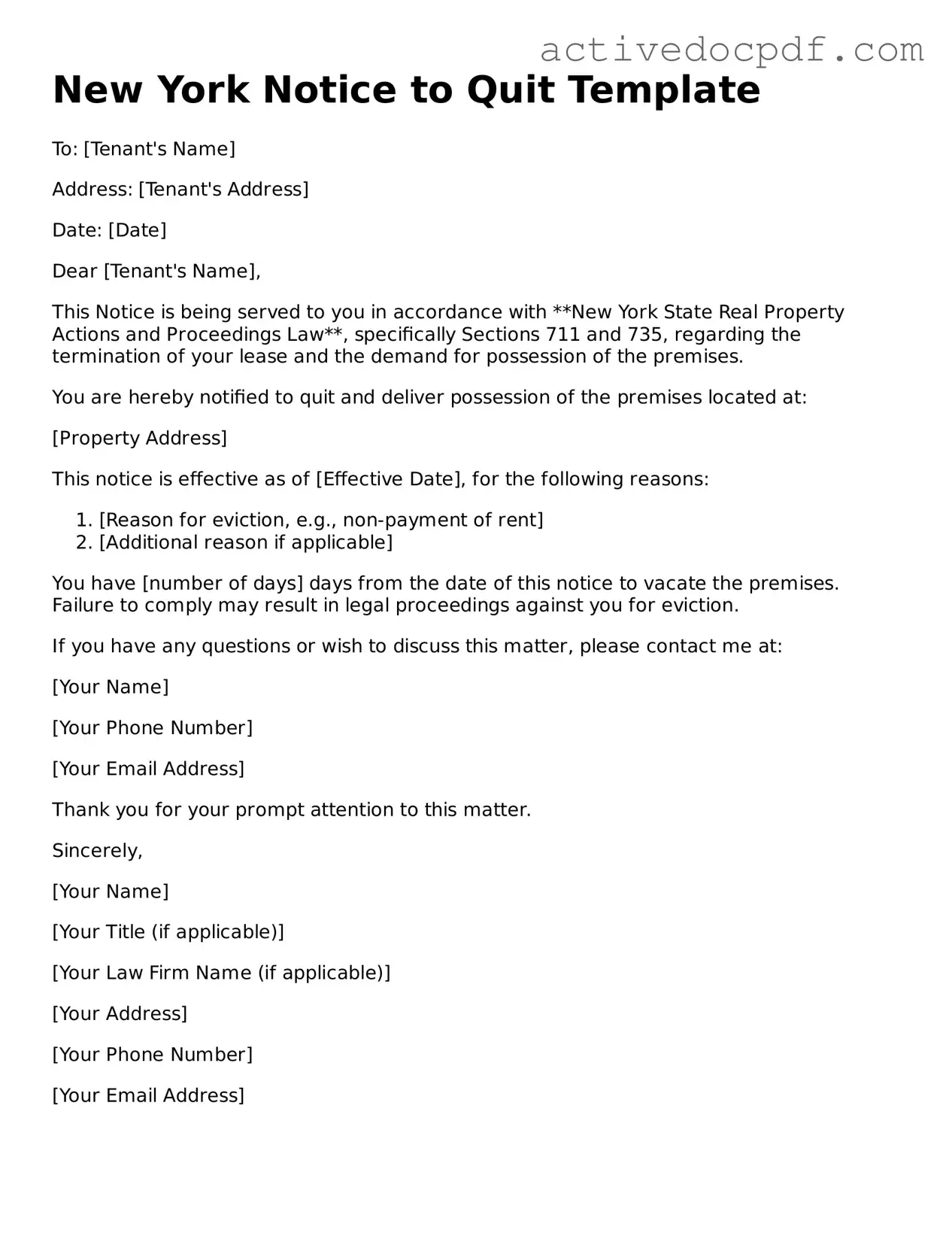What is a Notice to Quit in New York?
A Notice to Quit is a formal document that a landlord issues to a tenant when they want to terminate a rental agreement. This notice informs the tenant that they must vacate the property by a specific date. In New York, this form is typically used when a tenant has violated the lease terms, failed to pay rent, or when the landlord simply wishes to end the tenancy.
When should a landlord use a Notice to Quit?
A landlord should use a Notice to Quit in various situations, including:
-
Non-payment of rent
-
Lease violations, such as unauthorized pets or excessive noise
-
When the lease term has expired, and the landlord does not wish to renew
It is important to note that this notice is often the first step in the eviction process, so it should be used thoughtfully.
How much notice must a landlord give?
The amount of notice required can vary depending on the reason for the eviction. Generally, landlords must provide:
-
14 days for non-payment of rent
-
10 days for lease violations
-
30 days for month-to-month tenancies
Always check local regulations, as they can differ based on specific circumstances.
Can a tenant contest a Notice to Quit?
Yes, tenants have the right to contest a Notice to Quit. If a tenant believes the notice is unjust or that they have rectified the issue (like paying overdue rent), they can respond. It’s often beneficial for tenants to seek legal advice to understand their options and rights in this situation.
What happens if a tenant does not leave after receiving a Notice to Quit?
If a tenant does not vacate the property by the specified date, the landlord can proceed with eviction proceedings. This typically involves filing a petition with the court. The court will then schedule a hearing where both parties can present their case. It’s crucial for landlords to follow proper legal procedures to avoid complications.
Is a Notice to Quit the same as an eviction notice?
While a Notice to Quit is often a precursor to an eviction notice, they are not the same. The Notice to Quit is the initial communication informing the tenant to leave, while an eviction notice is issued after the tenant fails to comply with the Notice to Quit. The eviction notice usually follows legal procedures and may involve court action.
Where can I find a template for a New York Notice to Quit?
Templates for a New York Notice to Quit can often be found online through legal aid organizations or state government websites. It’s essential to ensure that any template used complies with New York laws and includes all necessary information to be valid. Consulting with a legal professional can also help ensure that the notice is properly drafted.
